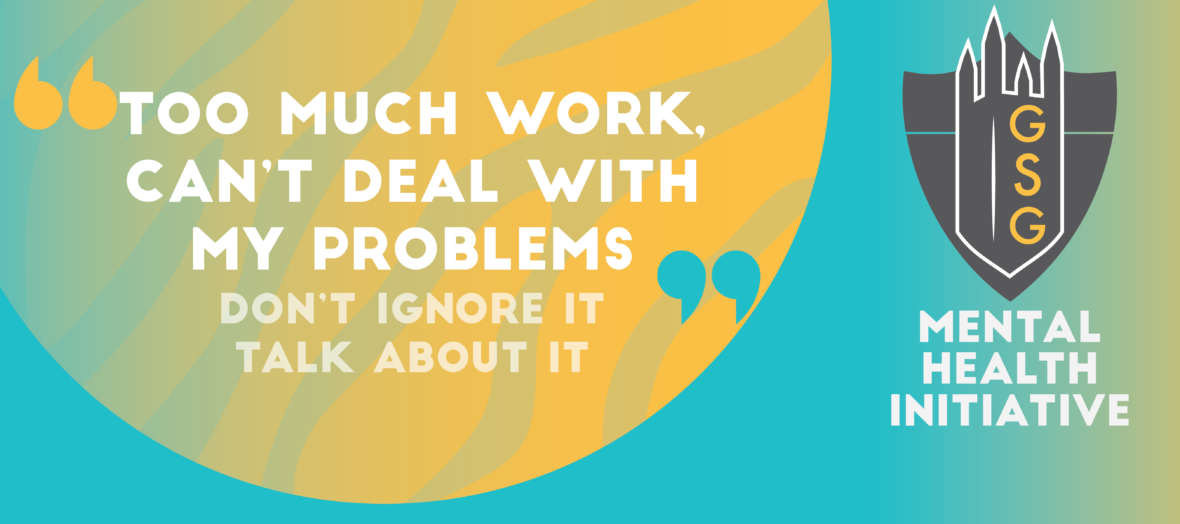
In my department, I have my usual morning routine. I post the day’s meeting schedule; refill the coffee dispensers; distribute the mail; answer my emails; review my calendar and prepare for the day’s tasks as a faculty assistant. On a particular Monday afternoon, my usual weekly meeting with my department manager runs slightly overtime and we both have to rush to the same staff training. As I walk brusquely beside her, I feel the gulf between us. I hastily enter the classroom for the Princeton Distress Awareness and Response training for administrative staff, squeeze into a seat in between two desk armrests and rest my notebook on top of one of them ready for the notes I will not take. I notice the empty chair in between my manager and me. Once settled, I surreptitiously glance around the packed room and take in about fifty people some of whom I recognize. The ratio of 1 to 5 reverberates in my mind. I quickly calculate ten. Ten people in this room have a diagnosable mental health difference according to the National Alliance on Mental Illness. I refocus and hear the Director of Counseling and Psychological Services at the front of the room state assuredly that we will be given the tools to provide support to students by recognizing the signs of distress and knowing the resources for action. He then takes a fresh piece of white chalk out of a box and writes methodically across the top of the chalkboard from the left side of the room to the right in tall letters three headings, Academic – Emotional – Physical. As I participate in answering each question that checks off a list of warning signs under each heading, I think of which ones I have experienced, withdrawn – check, crying spells – check, sleeplessness – check, and wonder if anyone else in the room self-evaluates in their seat. In my mind, I recall my own suicide attempt and previous hospitalizations. I listen as one by one other staff confidently volunteer answers for each list as if to reinforce that they are not the ones in distress including me as if with each answer I could increase my chances to be seen as one of the majority and deny that I am one of the ten.
What does that mean? Every weekday I wake up and go to work and execute my responsibilities to the best of my ability, but I also live with the fear that if I ask for accommodations or reveal my disability that I will be treated differently, discounted or viewed as a ticking time bomb. What is my disability? I was diagnosed at the age of 24 with bipolar disorder I, mixed episode, meaning that I can simultaneously experience depression, mania and delusions as the spectrum shifts. But I have been in remission for eight years and depend on daily medication, exercise, healthy diet, adequate sleep, therapy, psychiatric care, support from family and friends, and art.
I am part of a community of sixteen artists that have studios housed in a building called Art Station located in Hightstown. There in my studio I sculpt with prescription bottles and draw on a collection of medication guides to create work with mad pride that not only addresses my mental health experience, but also through interaction invites people to consider their own and how they support others. I have given artist talks at chapters of the National Alliance on Mental Illness and at national conferences like the College Art Association and exhibited my art across the country to break stigma, fight prejudice, and dispel stereotypes. People have confided to me their own experiences as a mental health survivor or the challenges they have faced in understanding a family member with a mental illness. I believed I was an advocate for neurodiversity, but I was confronted by my own silence at Princeton University until now.
I self-identify as someone with an invisible disability of bipolar disorder who is Thai American, a daughter, a sister, an aunt, a friend, an artist and a survivor. My disability of mental health difference is a part of my cultural identity through which I view the world and has given me the ability to empathize with others who have disabilities. I hope that the other nine people can read this and know that it is okay to be in the minority and they are not alone. We are a part of the rich diversity of this campus community. I am not brave to come out if it is not out of the ordinary, but accepted and embraced. I am your colleague and I am bridging the gulf.
